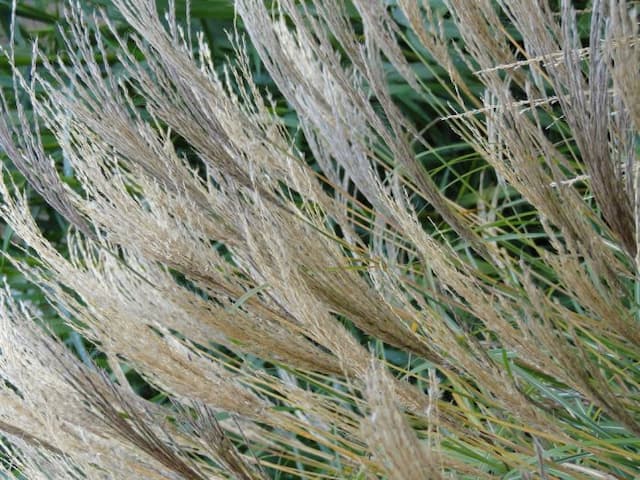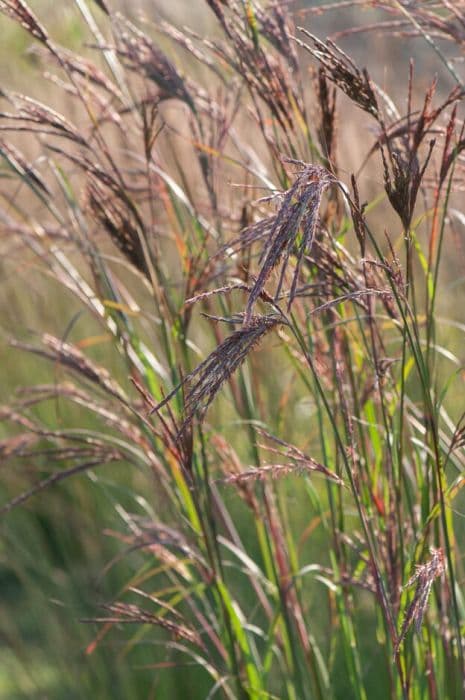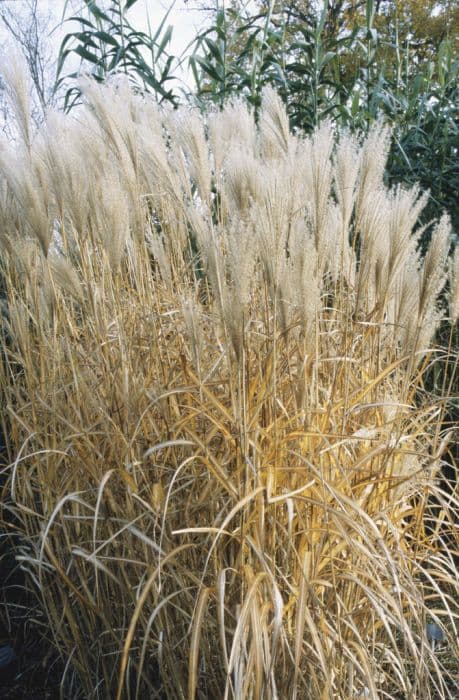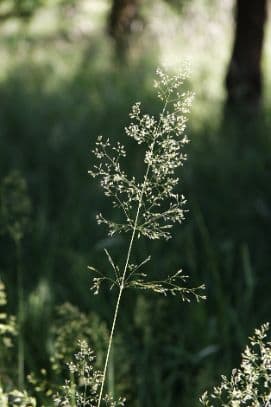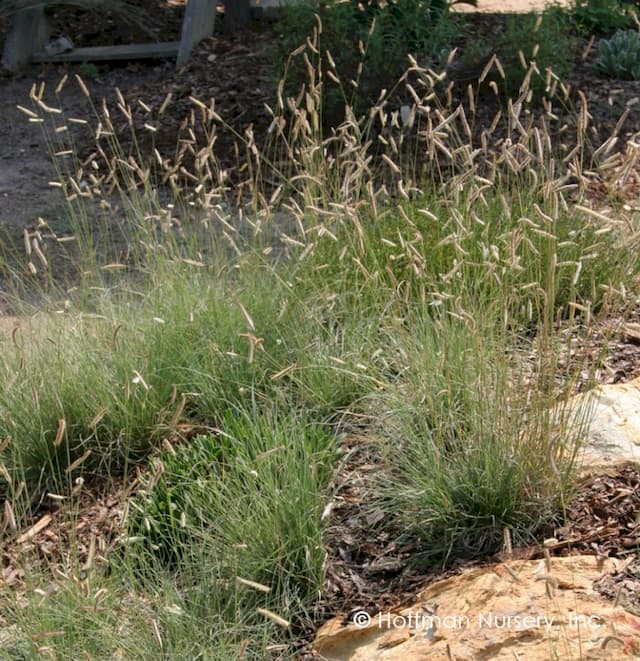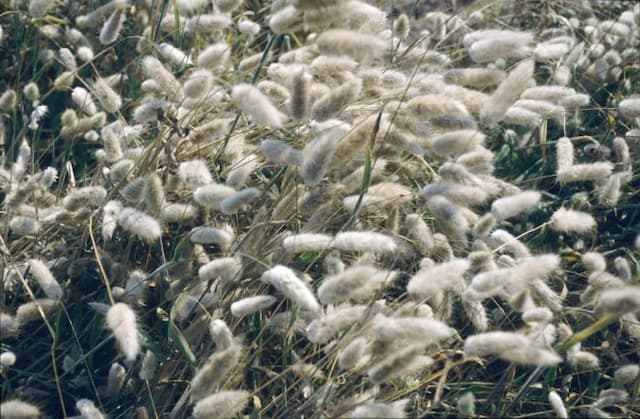Giant fescue Festuca gigantea

ABOUT
F. gigantea is an evergreen grass to 1m tall with broad, flat, shiny foliage, purple nodes on the stems, and green flowers on sparse, arching stems in mid- to late summer
About this plant
 Names
NamesFamily
Poaceae
Synonyms
Giant Fescue, Tall Fescue, Wood Fescue
Common names
Festuca elatior, Schedonorus giganteus, Festuca arundinacea var. gigantea, Lolium giganteum.
 Characteristics
CharacteristicsLife cycle
Perennials
Foliage type
Deciduous
Color of leaves
Green
Flower color
Green
Height
4-6 feet (1.2-1.8 meters)
Spread
2-3 feet (0.6-0.9 meters)
Plant type
Grass
Hardiness zones
5
Native area
Europe
Benefits
 General Benefits
General Benefits- Erosion control: Festuca gigantea has extensive root systems that help stabilize soil and prevent erosion.
- Habitat for wildlife: It provides shelter and food for various species, particularly beneficial insects and birds.
- Aesthetic appeal: With its tall and graceful foliage, it adds visual interest and texture to gardens and landscapes.
- Drought tolerance: It is relatively drought-resistant once established, making it suitable for low-water gardens.
- Low maintenance: It requires minimal care, making it a good choice for people seeking low-maintenance landscaping options.
- Climate adaptation: This species can thrive in a variety of climate conditions and is hardy in the environments where it naturally occurs.
- Soil improvement: Festuca gigantea can improve soil structure over time through its dense root networks.
- Seasonal interest: It offers seasonal interest with changes in color and form, contributing to the year-round attractiveness of the landscape.
 Medical Properties
Medical PropertiesThis plant is not used for medical purposes.
 Air-purifying Qualities
Air-purifying QualitiesThis plant is not specifically known for air purifying qualities.
 Other Uses
Other Uses- Giant fescue can be used for landscape rehabilitation, as it aids in stabilizing soil and preventing erosion on slopes or in areas with surface instability.
- The plant may serve as a fodder alternative for grazing animals, particularly in regions where other forage may be scarce or less suited to local conditions.
- Giant fescue's dense growth habit can provide a habitat for small mammals and birds, enhancing biodiversity in garden or wild landscapes.
- Its fibrous material can be incorporated into handcrafted papers, adding texture and visual interest to the finished product.
- The grass's tall and elegant form is utilized in ornamental arrangements, creating height and structure in floral displays.
- Gardeners may use giant fescue to create natural screens or dividers within outdoor spaces, owing to its height and dense foliage.
- In some traditional practices, dried stems of the plant may be used as a natural thatching material for roofing shelters.
- Giant fescue can be employed in noise reduction strategies for gardens adjacent to busy roads, as its thick growth can help absorb sound.
- The seed heads of the plant can be used for crafts or as a natural filler in home-made pillows and cushions.
- For those interested in photography or painting, the striking form and texture of giant fescue can serve as a subject for artistic representation.
Interesting Facts
 Feng Shui
Feng ShuiThe plant Festuca gigantea, commonly known as Giant Fescue, is not used in Feng Shui practice.
 Zodiac Sign Compitability
Zodiac Sign CompitabilityGiant Fescue is not used in astrology practice.
 Plant Symbolism
Plant Symbolism- Giant Fescue: Resilience - Festuca gigantea, commonly known as Giant Fescue, symbolizes resilience due to its ability to thrive in challenging environments and withstand adverse weather conditions.
- Strength - The robust growth and large size of the Giant Fescue metaphorically represent strength and sturdiness, indicating an individual's strong will or a resilient community.
- Endurance - As a plant that performs well over long periods, Giant Fescue embodies the idea of endurance, suggesting the tenacity to persist through hard times.
- Adaptability - Giant Fescue's ability to adapt to various soil types and conditions is often seen as a symbol of adaptability, emphasizing flexibility and the capacity to adjust to change.
- Protection - The thick clumps formed by Giant Fescue can provide shelter for smaller plants and animals, hence symbolizing protection and a nurturing spirit.
 Water
WaterGiant Fescue requires consistent moisture, especially during the peak of its growth in spring and early summer. It should be watered deeply once or twice a week, depending on weather conditions, with approximately 1 inch of water each time. For mature plants, reduce watering frequency to encourage deep root growth, but ensure the soil doesn't dry out completely. During prolonged dry spells or extreme heat, it may be necessary to increase watering to maintain soil moisture. A good rule of thumb is to provide about 0.5 to 1 gallon per square foot every week, adjusting as necessary for rainfall and temperature changes.
 Light
LightGiant Fescue thrives in a spot with full sun to partial shade. The ideal location receives at least six hours of sunlight daily but is protected from the harsh afternoon sun, which might stress the plant during hot summer days. Gentle morning light is preferable as it allows the grass to grow vigorously and maintain its rich green hue.
 Temperature
TemperatureGiant Fescue prefers moderate temperature ranges and grows best where the average temperature is between 60°F and 75°F. It can tolerate minimum temperatures down to about 40°F and maximum temperatures up to around 80°F without significant stress. The plant is reasonably cold-hardy but may suffer in high heat conditions if not adequately watered.
 Pruning
PruningGiant Fescue should be pruned to remove dead or damaged foliage and to promote air circulation, which can reduce disease risk. The best time for pruning is in the late winter or early spring before new growth begins. Prune every two or three years, or as necessary to maintain a tidy appearance and to remove any dead grass at the base of the plant.
 Cleaning
CleaningAs needed
 Soil
SoilGiant Fescue thrives in a well-draining soil with a loamy texture and a pH range of 5.5 to 7.5. To create an optimal soil mix, blend one part garden soil, one part compost, and one part perlite or coarse sand to ensure proper drainage and fertility.
 Repotting
RepottingGiant Fescue typically does not require frequent repotting and can be repotted every two to three years or when you notice signs of the plant outgrowing its container.
 Humidity & Misting
Humidity & MistingGiant Fescue prefers average humidity levels and is quite adaptable to different environmental conditions; it does not require any special humidity adjustments.
 Suitable locations
Suitable locationsIndoor
Place Giant Fescue near a sunny window; water sparingly.
Outdoor
Plant Giant Fescue in a sunny spot; water regularly.
Hardiness zone
4-8 USDA
 Life cycle
Life cycleGiant fescue (Festuca gigantea) begins its life cycle with seed germination, typically occurring in cool, moist soil in the spring or autumn. After germination, the seedling develops into a small clump of fine, needle-like leaves, establishing a root system. As it matures, the grass enters the vegetative stage, growing taller and producing more leaves, which form dense tussocks. This perennial grass then reaches the reproductive stage, sending up tall flowering stems with inflorescences known as panicles, which bloom in early to mid-summer. After pollination, seeds develop and are eventually dispersed by wind, animals, or gravity, allowing the cycle to begin anew when conditions are favorable. Throughout its life, Giant fescue may experience periods of dormancy, especially in response to extreme temperatures or drought, after which it can resume growth when conditions improve.
 Propogation
PropogationPropogation time
Spring-Early Summer
Propogation: Giant fescue, known scientifically as Festuca gigantea, is often propagated by seed. The optimal time for sowing giant fescue seeds is in the late summer to early fall, ideally when soil temperatures are between 50 and 65 degrees Fahrenheit (10-18 degrees Celsius). To propagate, seeds should be evenly spread over a well-prepared seedbed that has been cleared of weeds and debris. Lightly covering the seeds with soil helps protect them from birds and provides a suitable environment for germination. Keeping the soil consistently moist but not waterlogged is crucial to encourage germination and seedling growth. Seedlings that emerge will develop into clumps that can be further divided in future seasons if desired. The use of seed for propagation is advantageous for its simplicity and effectiveness in establishing new plants.
